I always wanted to do a post on griha pravesham for quite some time and happened to get hold of the pictures of grihapravesham of my sister-in-law. Come; join me on a photo-tour of the South Indian grihapravesham.
Griha Pravesham is a ceremony that is performed to mark the first and formal entry of the house proud owners into the house. The D-day date is fixed on an auspicious day based on the astrologer’s advice.
The ceremony starts on the previous day with numerous pujas and homas to be performed by a group of priests lined up before the event.
While the pujas (prayers) are performed to invoke the blessings of various deities, the homas (dollops of ghee, herbs and cereals are added into a consecrated fire altar while reciting hymns) are performed to ward off evil influences and overcome obstacles.
The house is decorated with flowers and beautiful rangolis.
The D-day marks with special pujas and the formal entry is initiated by offering prayers to a cow (special invitee) and inviting the cow to take the first step inside. Care is taken to ensure that the cow enters with the right foot first!
The priest covers the entrance and chants hymns before unveiling the covered entrance. The house owner (lady) then enters the house by kicking a container filled with rice and jaggery with her right foot.
The kitchen is decorated with flowers and rangolis. After the rituals, the stove is lit with a container filled with milk. The milk (sign of prosperity) is allowed to boil and spill over (it’s a way of wishing that prosperity shall keep overflowing in the house). This is then mixed with sugar and distributed the family and guests.
The decorated melon is filled with coins and color and crushed outside the house wishing that the owners will always be blessed with overflowing prosperity.
Hope you enjoyed the post as much as I did.

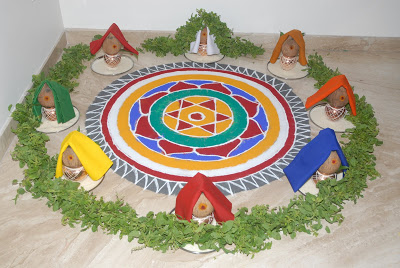
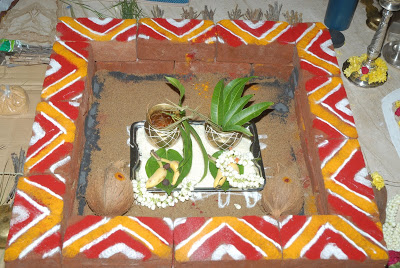
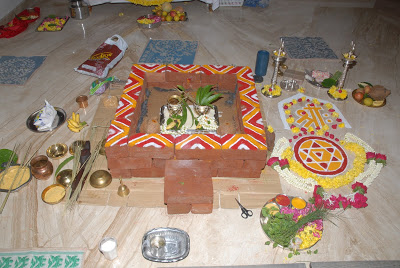
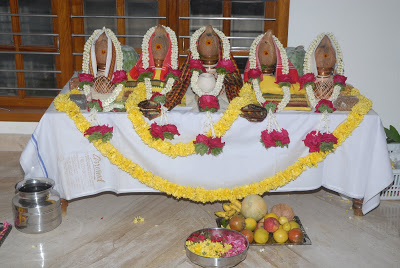
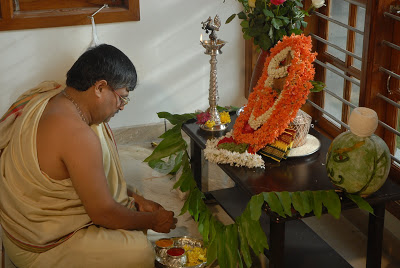
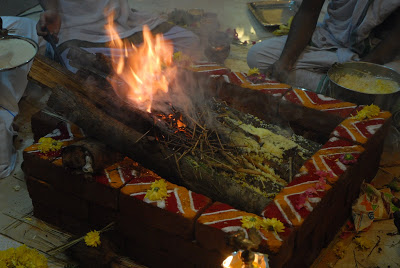
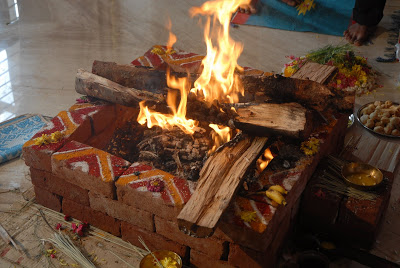
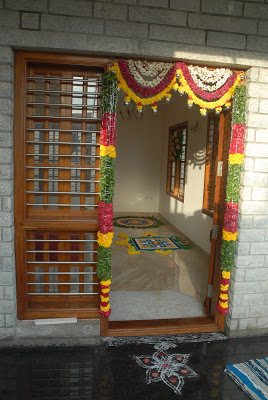
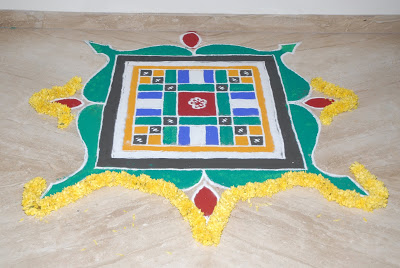
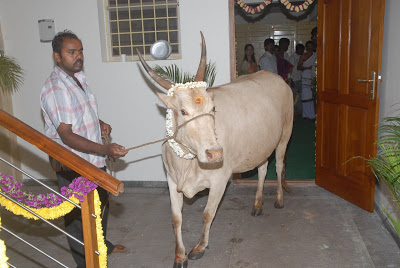
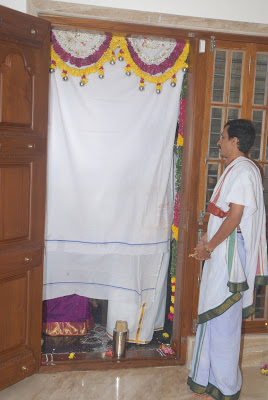
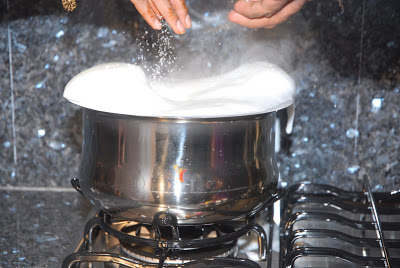
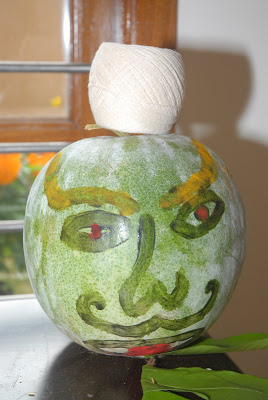




loved this post rekha! reminded me of my house gruhapravesha!
oh ya..agree with veda..it reminded me of all the childhood and our house grahapravesam mempries
What a beautiful post Rekha, I loved your pics…and I have never seen a south indian grihapravesham…so this was all so new for me…awesome stuff and very well written as well, thanks
Awesome.. post… Rekha!! I've witnessed one in Mangalore.. quite similiar actually..
thnks,…
I always appreciate those priests who draw beautiful rangoli for such occassions. Lovely post Rekha.
Veda, deepa, prachi, pat, glad you loved the post.
Laxmi, i am also a great fan of these poojari rangolis, they are far better than any of us!
Posted well …. all the pics captured well to bring out the essence of the occasion & the ceremony… INFO TO THE WORLD….
Ash….
(http://asha-oceanichope.blogspot.com/)
Love this post Rekha !!! Agree with you on the pujari rangolis….they absolutely super 🙂
good thought of writing this post… lovely….
Very nice post and pics. Just not sure if I would call it D-day given the connotation 🙂 Also, I thought that a pumpkin is hung over the house to ward off evil spirits. Is the melon thing the same or a different ritual?
Beautiful post..Thanks for the pictures and the description .really enjoyed reading 🙂
Asha, rekha, vasudha, gulmohar, I am glad you enjoyed reading the post.
Anon, you are right, a melon that is hung over the house to ward off evil spirits but this ritual of crushing a melon filled sindoor and coins after the arti is a part of the Grihapravesham ceremony in south.
This is such a beautiful post, Rekha! I absolutely loved reading your description and the accompanying photos! Thanks for stopping by my blog, you have a great space here which I'll be sure to visit often 🙂
Rekha loved your blog so much that I checked all posts at one go. lovely blog with some great thoughtful write ups. love it.